how to clean mold off bathroom ceiling
Whether it's a few spots along your shower door tracks, or sizable outbreaks in the corners of your basement, mold is a common problem for many people. Learn what mold is, if it's dangerous, and how to remove mold from all the surfaces in your home or commercial property.
What is mold
Mold is a type of fungus that grows on almost any damp surface. It's not unusual to find mold in bathrooms, kitchens, and basements, and throughout any property where condensation is a problem. Mold can be black, white, green, purple, or orange, and vary from small, penny-sized spots to taking up whole walls. Left unattended, mold will continue to spread as long as there's water and food to sustain it. That means it can quickly get out of hand, particularly in areas of your home you don't regularly use, such as the basement or attic, or even between the walls.
What causes mold in properties
Mold and mildew only need two elements in order to grow: moisture and a food source. Usually that's an organic material such as cotton, leather, or cellulose (found in wood and paper). Unfortunately both of those elements are very common in all kinds of properties. A little water that stays in the tracks of your shower door, or condensation from a broken window seal, are all mold really needs. There is plenty of organic material for them to eat — the frame, walls, floors, ceilings, and furniture of homes are all fair game. That means mold can grow almost anywhere, so being vigilant and tackling it early can minimize the damage mold can cause to your home and your health.
Pro Tip: Mildew is the name for the staining left behind by mold infestations.

Different type of mold and mildew
Most types of mold are harmless to humans. Some cause low-level irritation such as runny noses and eyes, coughs, and rashes. A few are extremely harmful to health and should be removed immediately by a professional. These are the most common kinds of dangerous mold and mildew found in homes:
| NAME | COLOR | DESCRIPTION | LOCATION FOUND | HEALTH SYMPTOMS |
| Aspergillus Niger | Black with white or yellow underneath | Most common form of black mold | On damp walls, fruits and vegetables | Rare, but can cause serious lung disease |
| Aspergillus Flavus | Yellow-green and reddish-brown underneath | Appears downy or powdery in texture | On nuts and grains | Produces mycotoxin aflatoxin, which causes liver cancer |
| Aspergillus Fumigatus | Greenish center with gray edges | Round, fluffy looking growths | On any damp or decomposing organic material | Allergic reactions and potentially fatal aspergillosis in immunocompromised individuals |
| Cladosporium | Black, yellow, green | Clusters of fluffy spots | On almost any damp surface | Allergic reactions, increasing in severity with prolonged exposure |
| Stachybotrys chartarum (atra) | Greenish-black | Appears slimy or soot-like | Moist, high-cellulose surfaces, especially inside walls | Respiratory, neurological, and immune impairments, and death, especially in the young, old, and immunocompromised |
Black mold ( stachybotrys ) is the variety most people are afraid of, but even black mold can be easily removed if caught early enough. What kills black mold is the same as all other molds — white vinegar, hydrogen peroxide, rubbing alcohol, and fungicidal solutions will all kill it. Although some websites advise on black mold removal using essential oils, do not do this. Essential oils might make your room smell fresh and clean, but they cannot kill mold.
If an infestation gets out of hand, black mold removal costs can quickly become expensive. If you do see mold in your property, it's always better to treat it as quickly as possible.
Despite this, most molds (and there are hundreds of thousands) are benign, or cause only mild allergic reactions such as sneezing, coughing, and low-level irritation. However it can be hard to tell which mold you have in your home, or how it could affect you or your tenants. In order to reduce exposure, and limit liability if anyone in the property does get sick, it's always wise to remove any mold or mildew as quickly as possible.
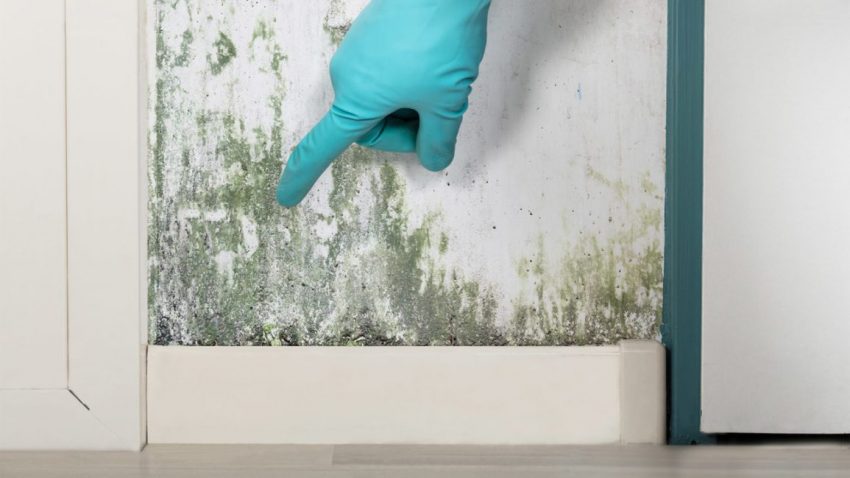
Tackling the underlying cause of mold
Molds are all around us — we breathe in their spores every day. It's impossible to prevent mold from entering any property, but steps can be taken to stop mold from finding a new home in your house. Without addressing the underlying cause of why mold is growing in a particular area, it will just keep coming back.
Molds only need two things, food and damp. It's impossible to remove the food mold needs from your home, because your property is made of it. Particle board, gypsum, wooden framing, and soft furnishings can all nourish and sustain large mold colonies. What you can control, however, is damp. When mold is discovered, look for the underlying source of water.
There are three common ways that water can cause problem mold growths:
- Maintenance issues such as leaking pipes or failed window seals
- Human error, for example not drying water in shower door tracks or splashing water around a sink
- Construction-related , usually relating to ongoing condensation issues caused by poor airflow
The first two are easy to resolve. Simply repair the problem or change your habits to be more conscious of where water is splashing and pooling. If mold is growing because of the construction of your property, it may require more extensive intervention. Installing fans or vents, replacing portable heaters, or investing in a dehumidifier might be necessary to resolve the problem.
Removing mold from different surfaces
Once the root cause of the mold has been dealt with, it's time to address the visible mold itself. Often the infestation is worse than can be seen with the naked eye, so it's important to do more than wipe mold off surfaces and hope for the best. The mold you see is the spores or fruiting body of the fungus, but often the hidden roots survive a first attempt at removal and the mold comes back. Here's how to remove mold for good, wherever you find it in your property.
Before you start: Make sure to ventilate the work area properly, and wear appropriate personal protective equipment (PPE) to protect against mold spores that will be disturbed when you begin working. Gloves, safety glasses, and an N95 or better mask are all essential. Wear a long sleeved shirt and pants to avoid getting spores on your skin. Try to close off the area from other rooms to prevent spores from spreading throughout your home, and consider renting a HEPA air filter.
Pro Tip: The EPA recommends only removing mold yourself if it covers an area less than 10 square feet. Any larger than that and you need to call in the pros.

How to get rid of mold on walls
Many people first notice they've got a mold problem when they see it growing on their walls. Check in the corners near the ceiling and floors in rooms with high moisture levels, such as kitchens, bathrooms, laundry rooms, and basements.
You'll need:
Bleach
Water
White vinegar
3 percent hydrogen peroxide
2 spray bottles
Scrubbing brush
Method:
Step 1: Make a solution of one part bleach to three parts water in the spray bottle.
Step 2: Saturate the mold and surrounding area on the wall.
Step 3: Let the solution soak into the mold for 10-15 minutes.
Step 4: Using the scrubbing brush, remove the mold and stains.
Step 5: Repeat as necessary to remove all the traces of mold and mildew.
Step 6: Make a 50/50 mixture of white vinegar and hydrogen peroxide in the second spray bottle.
Step 7: Spray the cleaned surface and allow it to absorb and air dry.
This method works because it addresses the visible mold, as well as the underlying roots that often go untreated. Surprisingly, vinegar and hydrogen peroxide are both more effective at killing mold roots than bleach. Because they work best on different types of mold, try to use them together to cover all the possible varieties of mold you might be dealing with.
Pro Tip: If you don't have hydrogen peroxide at hand, you can also clean mold with vinegar and baking soda instead.
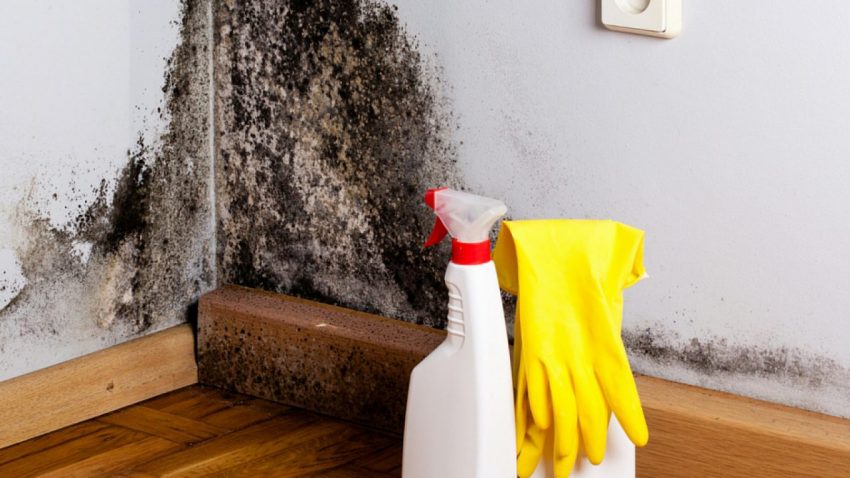
How to remove mold from drywall
Removing mold from drywall can be tricky because if drywall gets too wet, it is ruined. In fact, it's often easier to cut out the infected section of drywall and replace it, rather than trying to treat the mold directly. If the drywall feels soft, it's beyond saving. However if you do want to clean the drywall without removing it, here's what to do.
You'll need:
3 percent hydrogen peroxide
White vinegar
Disinfectant wipes
Scrubbing brush
Medium-bristled brush
Spray bottle
Method:
Step 1: Brush the mold off the drywall using the scrubbing brush. Try to remove as much as possible without getting the wall wet.
Step 2: Make a 50/50 solution of white vinegar and hydrogen peroxide. Spray it onto the area until it is damp, but not soaked.
Step 3: Wait 10 minutes then use a medium-bristled brush to clean the wall using circular motions. Don't scrub too hard or you'll damage the drywall.
Step 4: Wipe down the wall using household disinfectant wipes.
Step 5: Allow the wall to dry. In high-humidity environments, set up a box fan directed toward the wall to dry it as quickly as possible.
If the drywall is stained when dry, use a primer or stain block before repainting. Consider a mold-resistant paint to provide extra protection, and reduce humidity in the room to stop mold from returning.
Pro Tip: Learn How To Remove Humidity from Your Furniture and Textiles for Proper Moisture Control
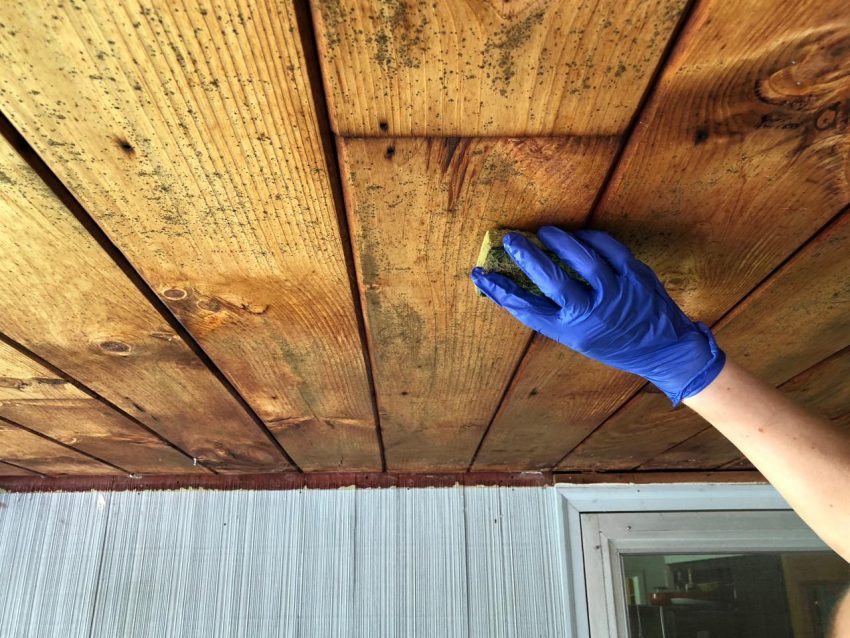
How to clean mold from wood
Mold loves wooden surfaces. Whether it's your window sills, flooring, wall framing, or furniture, the high cellulose content of wood provides mold with lots of food. Because wood is also very absorbent, it's easy to create a perfect environment for mold with very little moisture. If you do find mold growing on wood in your house, here's how to get rid of it.
You'll need:
Dish soap
Water
Borax
Vacuum with HEPA filter
Spray bottle
Soft-bristled brush
Paper towels
Box fan or dehumidifier
100-grit sandpaper
Method:
Step 1: Begin by vacuuming up as much of the mold as possible using a vacuum with a HEPA filter. You can also use a soft-bristled brush to dislodge the mold and make this easier. Remember to wear a dust mask to prevent breathing in mold spores while you do this.
Step 2: Add a teaspoon of soap to two cups of water in a spray bottle. Shake to combine and spray the mold and surrounding surface.
Step 3: Use a soft-bristled brush to scrub away the mold and mildew. Use paper towels to soak up any excess water.
Step 4: To kill the roots, add 1 tablespoon of borax to a cup of water and use a soft-bristled brush to apply the solution to the area. Allow it to absorb into the wood.
Step 5: Run a fan or dehumidifier in the room to quickly dry the wood.
Step 6: If the mold is very stubborn, use 100-grit sandpaper to remove the affected area.
Wood's porosity can make it hard to clean mold completely. You should also consider the possibility of staining wood when applying any treatment. That's why we recommend using dish soap and borax when dealing with wooden surfaces, because they are less likely to leave discoloration behind (both vinegar and peroxide have a bleaching effect). Bleach itself is also not a good choice for wood because it won't absorb, meaning mold roots will survive.
Pro Tip: Is the wood still stained? This is usually a result of mildew — the discoloration mold leaves behind. While bleach doesn't kill mildew, it can help remove the stains. Try scrubbing a small area with a dilute bleach solution.
How to remove mold from painted wood
Just because a wooden surface has been painted doesn't mean it's immune to mold. Interior doors, window frames, and baseboards can all get moldy. The good news is the paint can form a protective barrier that prevents mold from getting into the wood, making cleanup faster and easier.
You'll need:
Dish soap
Water
White vinegar
3 percent hydrogen peroxide
Spray bottle
Soft-bristled brush
Paper towels
Method:
Step 1: Use damp paper towels to wipe away the visible mold. A soft-bristled brush will help dislodge any stubborn parts.
Step 2: Make a solution of 1 teaspoon dish soap to 2 cups water and use the spray bottle to apply it to the wood.
Step 3: Scrub the surface gently with the soft-bristled brush to remove any remaining stains. Wipe clean with paper towels.
Step 4: Combine one part white vinegar with one part 3 percent hydrogen peroxide in a spray bottle and spritz the surface. Do not soak the wood, just get it damp. Allow to air dry.
Mold is rarely a big problem on painted wooden surfaces, because of the protective barrier the paint creates. Vinegar and peroxide will prevent it from returning, but make sure to address the underlying cause. Painted wood isn't mold's first choice for a home, so it's likely there's an issue with damp in that area.
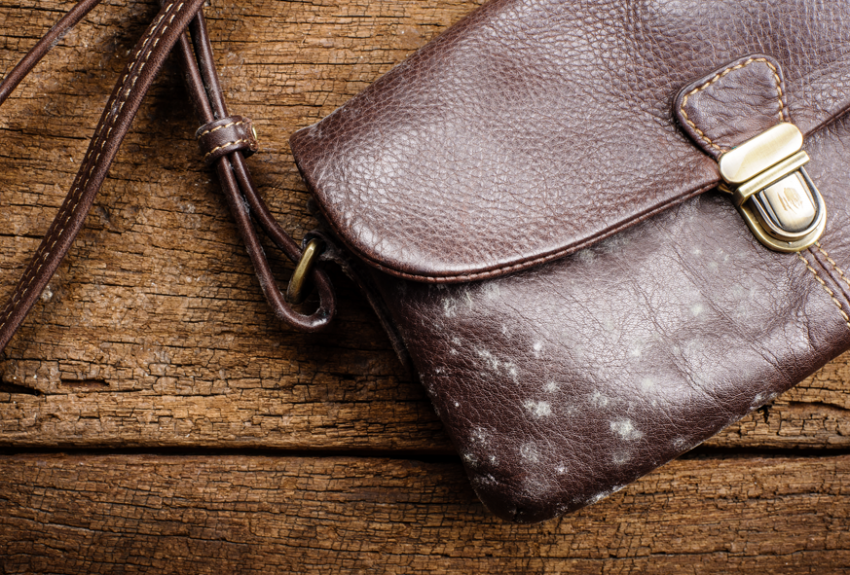
How to clean mold off leather
Leather might be a luxury product, but it's extremely susceptible to mold growth. However if you discover mold on your recliner or favorite boots, all is not lost. Here's how to clean the mold and stop it from coming back.
You'll need:
Soapy water or leather cleaner
Soft cloth
Method:
Step 1: Place the leather somewhere warm and allow it to dry completely. This will make removing mold easier.
Step 2: Using a damp cloth, wipe down the leather to remove the mold.
Step 3: Clean the leather using a leather cleaner or a mild soap such as baby shampoo.
Step 4: Carry out regular cleaning and maintenance to prevent mold returning.
Mold can quickly take hold of leather products and cause a lot of damage, from discoloration to reducing the leather's lifespan. Adding to the problem, you cannot use detergents or bleach on leather, as they will also cause damage. Therefore treating leather items regularly with specialized cleaners and keeping them dry is the best defence against mold growth.
Pro Tip: If you don't have a leather cleaner on hand, alcohol might help. Surprisingly, alcohol does kill mold and it's particularly effective on leather. However, always spot-check any cleaner before you use it!
Mold removal from fabric
It's easier than you might think for clothes to attract mold and mildew. A forgotten load of laundry in the washing machine, the pile of clothes at the bottom of a closet, or even the armchair in a humid room can all quickly become overrun with mold. However as long as you catch the problem early, your fabrics can still be saved.
Bleachable fabrics
If you can apply bleach to a fabric without worrying about discoloration, do it. That's the fastest and most effective way of getting rid of mold. Many laundry bleaches can be used on white and colorfast fabrics, although you should always check the instructions, and never use bleach on wool or silk. Simply apply a solution of one part bleach to three parts water and let it absorb into the fabric for a few minutes before laundering as usual.
Non-bleachable fabrics
For fabrics that can't be bleached, use white vinegar instead. Either apply white vinegar to a cotton pad and place it on top of the stain for five minutes before laundering, or briefly soak in a solution of ¼ cup vinegar to one gallon water. Rinse through to remove the vinegar and launder as normal.
Upholstery
Mold doesn't grow on synthetic fabrics, so if you see mold on your upholstery, it's often a warning sign of something else going on underneath. Check the framework of your furniture to make sure the damage isn't extensive before starting to clean. If it is, you probably need to replace the item entirely. However if the mold area is small, you can clean it by scrubbing away the visible mold with a brush, then blotting the area with a 50/50 solution of 3 percent hydrogen peroxide and white vinegar. Be sure to spot-test an inconspicuous area first! Dab the area with a clean, damp cloth to lift the solution, and dry thoroughly with paper towels.
Related : All about cleaning fabrics
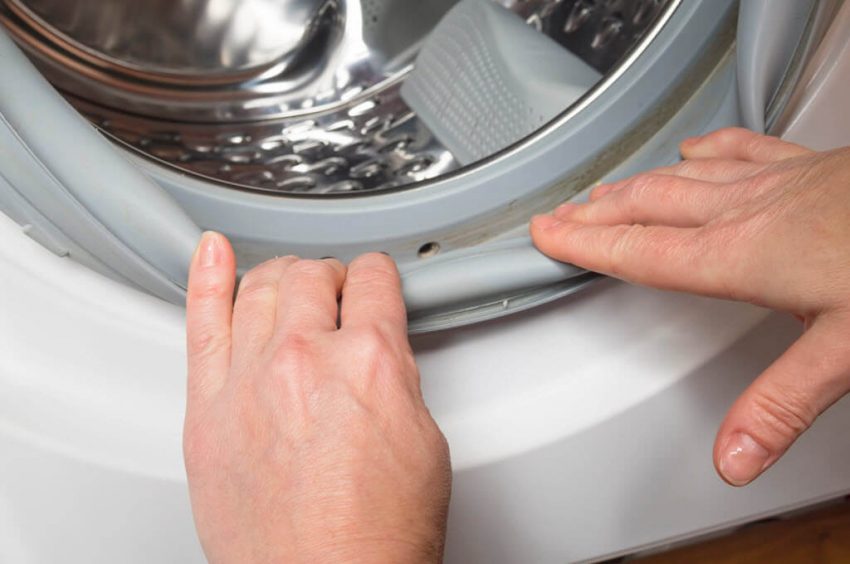
How to clean mold from front load washer gasket
Your washing machine can be a haven for mold, and the front load gasket is usually the first place it appears. Prevention is better than cure, so try to reduce the risk of mold by wiping the gasket between loads to keep it clean and dry. Use a 50/50 solution of white vinegar and hydrogen peroxide to clean the gasket on a regular basis to remove mold and prevent it from returning.
Related : How to clean your washing machine
Removing mold from different rooms
Some rooms are more prone to mold than others. Bathrooms are notorious for mold growth because they harbor damp, humid environments that mold loves. Less frequented rooms such as basements and attics can also suffer from mold, which can go unchecked for a long time before being noticed. Here's how to prevent mold from taking hold in each room of your property.
How to get rid of mold in a basement
Mold needs damp surfaces and organic matter — two things most basements have in abundance. If your basement isn't finished, or is rarely used, mold can be especially problematic. The first thing you should do is try to remove as much moisture as possible and prevent it from building up again. That means checking on seals, insulating pipes, and fixing leaks. Consider running a dehumidifier or fan on a regular basis to keep the air moving and prevent condensation from forming, and don't overlook the importance of knowing what's going on. Checking on the condition of a basement and looking for mold growth, especially in the corners of the walls and floor, will help you stay on top of any problems.
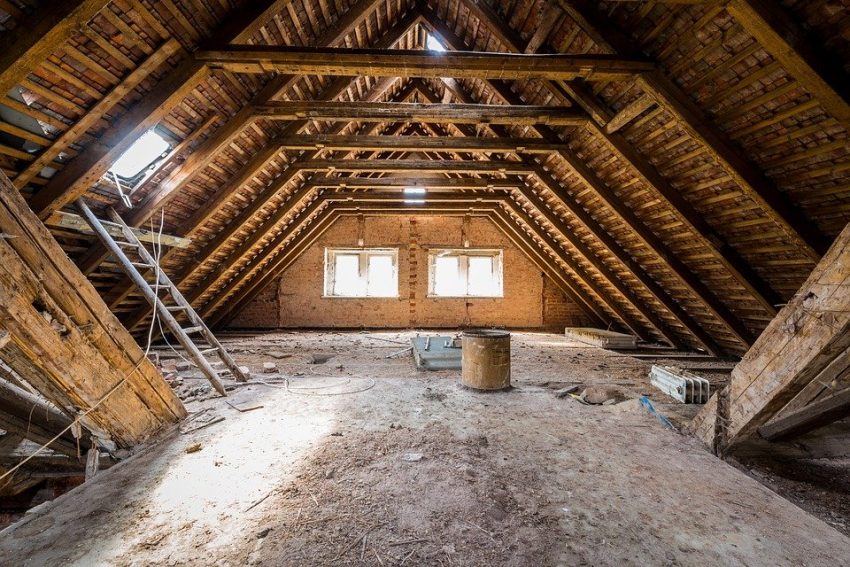
How to get rid of mold in attics
Attics are prone to mold either because of leaks from roofs or window seals, or because poor ventilation is allowing condensation to build up. Therefore treating those problems is always the most important step you can take to avoid getting mold in your attic, or to prevent it from coming back. Once you're sure your attic is watertight and ventilated, discard any stored items that are contaminated, or remove them for cleaning and restoration. Seal off the attic during cleaning and use a wet vacuum to clean as much visible mold as possible. Treat walls, floor, and exposed timbers with a mold removal spray to kill mold quickly and effectively, and install a fan or dehumidifier to dry the attic once the treatment is complete.
How to remove mold from inside walls
The inside of your walls is a great environment for mold, but a terrible one for you to find and clean. Often homeowners don't realize there is mold inside their walls until it's causing a major problem. Warning signs include an earthy, musty odor in the home, allergy symptoms that clear up when you leave the property, and stains or dampness on the wall itself. If mold does get inside your walls, you'll probably need a pro to handle it. At the very least, the drywall has to come down in order to properly access and treat the mold and prevent it from coming back. You can mitigate the damage by looking out for the warning signs, and reducing the humidity in your property.
Related : How to do a post-construction clean properly
How to clean mold off ceilings
Removing mold from a ceiling is no different to working on a wall, it's just trickier to reach. Use a step ladder, ask a friend to help, or purchase an extending pole to apply a cleaning solution to the ceiling without risking an injury. Mold usually appears on ceilings in humid rooms such as bathrooms, or in poorly ventilated areas. You can prevent mold from forming or returning by installing a vent or fan and using it regularly.
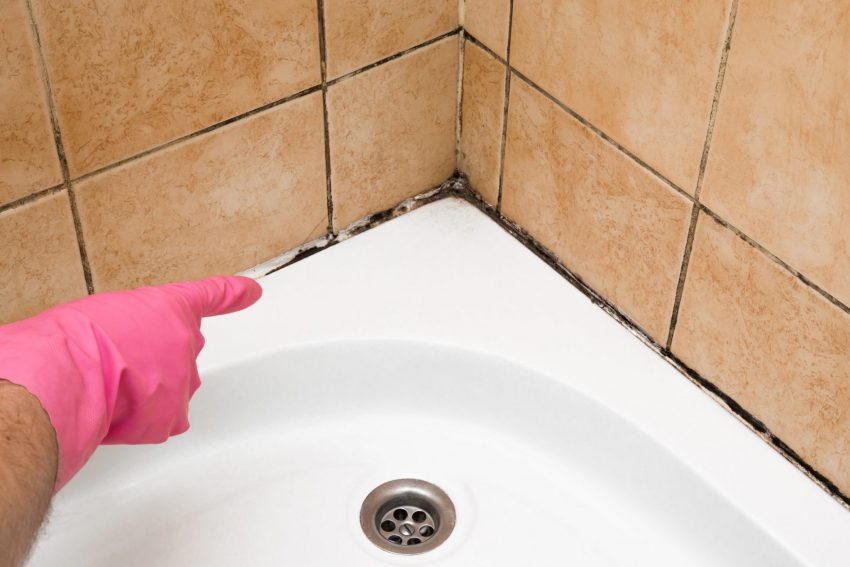
How to clean mold in bathrooms
There are a number of areas that mold can take hold in a bathroom. In general, wipe down surfaces to remove condensation and blot up standing water to prevent mold from growing.
How to clean mold in the shower
Check the corners and door tracks to see if your shower has mold. If it does, spray liberally with a 50/50 solution of white vinegar and 3 percent hydrogen peroxide, or use mold removal products. Allow the solution to sit for 20 minutes and then wipe dry with a soft cloth.
How to get rid of black mold in shower
Black mold in your shower might look scary, but it can be cleaned the same as any other mold growth. Just remember to wear respiratory protection and try to wipe down the area regularly to prevent it from coming back.
How to clean mold in shower grout
Grout can also attract and harbor mold. To clean it, use a 50/50 vinegar and peroxide mix to soak the area and leave for half an hour, before scrubbing with a firm-bristled brush. Once the grout is clean, rinse with plain water and wipe the area dry.
How to clean mold off a bathroom ceiling
Some bathrooms have mold-resistant tile or plank ceilings. These can be easily cleaned with a fungicidal solution designed for bathrooms, or with vinegar and hydrogen peroxide. If you have a plaster or drywall ceiling, use the same cleaning methods as with walls. To prevent mold from returning, try to reduce condensation by using vents or fans, and opening the bathroom door when the room is not in use to allow air to circulate.
Pro Tip: Although many websites will tell you how to treat mold with lemons, the only room where this is really effective is the bathroom. That's because lemon juice will only clean surface mold, not what might be underneath. For faucets, shower doors, tiles, and other non-porous surfaces, lemons make an effective mold-cleaning solution.

Treating mold in the air
Mold is all around us, all the time. The spores travel in the air until they land somewhere they can grow. Because of this, some people try to treat mold spores before they take hold in their properties. This can help reduce your risk of mold, and is especially useful in regions where lots of mold is found naturally in the ground, such as around farmland or swamps.
How to get rid of mold spores in the air
No machine will ever be able to get rid of all the mold that could enter your property, it's simply too small and too common. However you can reduce your risk by using an air scrubber, UV light treatment, or fogger designed for use against mold spores.
How to use an air scrubber for mold
Air scrubbers are usually part of a HVAC system, and are basically a series of superfine filters. The air that is drawn into your HVAC system from outside runs through the scrubber, and that removes harmful particles such as mold spores. Some scrubbers also contain purifying filters that kill pathogens and bacteria, and many businesses are now using industrial air scrubbers for COVID-19 prevention.
A properly installed air scrubber can remove 99 percent of contaminants from the air, making it a great option if you live in a mold-prone area or are immunocompromised. What an air scrubber can't do, however, is remove all the mold from your home. Every time you open a door or window, or a seal isn't quite secure, air will enter your home that hasn't been scrubbed and will almost certainly contain mold spores. Speak to a technician to learn about the best HVAC air scrubber for your system.
Air scrubbers vs air purifiers
Air purifiers do the same thing as air scrubbers, but on a smaller scale. They're basically portable air scrubbers. If you're only worried about the air quality in one room, purchasing an air purifier will be faster and cheaper than installing an air scrubber designed to clean the air in your whole house.
Using an air scrubber vs UV light
Another solution is to install a UV light attachment into your HVAC system instead of an air scrubber. This is often a cheaper and simpler solution, and UV light has germicidal properties that can kill all kinds of bacteria and pathogens, including mold spores. UV lights are also unobtrusive, and won't have any impact on your HVAC system's performance. By comparison air scrubbers can force the system to work harder to push the air through increasingly fine filters, resulting in a drop in power.
Mold bomb foggers for cars
Just like your property, your car can also suffer from mold. Foggers release a fine mist of fungicidal solution designed to get into all the nooks and crannies where mold might be hanging out. While many are safe to use in vehicles, always check the instructions and make sure to air the car out afterward to prevent breathing in any harmful chemicals.
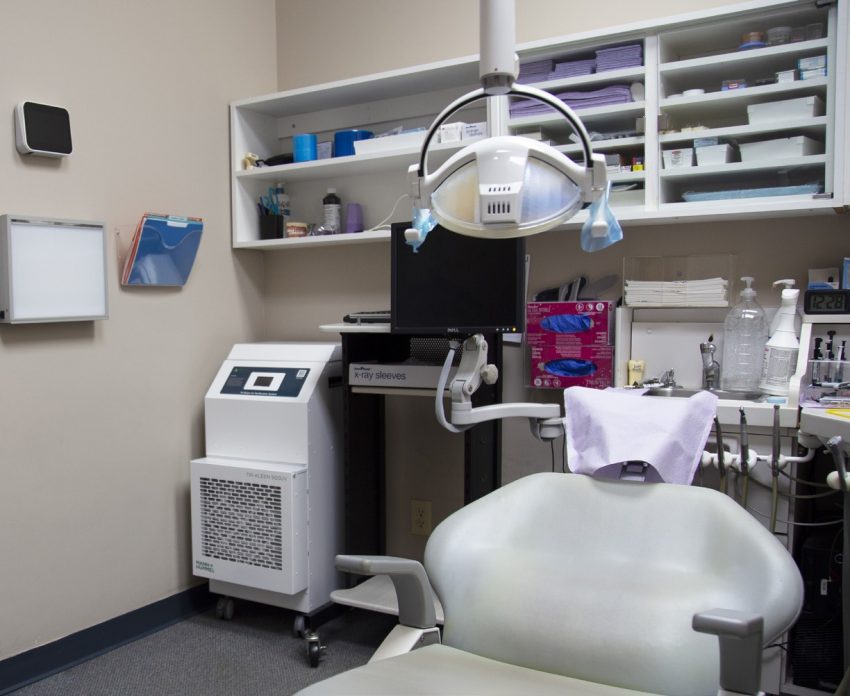
Conclusion
Knowing how to treat mold with hydrogen peroxide and vinegar will provide a simple solution that works on almost all surfaces and areas. In most instances homeowners, landlords, and property agents can handle mold themselves. When mold remediation is required, the remediation costs can run into several thousand dollars for treatment alone, plus the repairs required to put the property back in order after extensive mold removal. In most instances homeowners' insurance should pay for mold remediation, but insurers usually limit this to one claim per policy. After the mold remediation process is complete, you'll be on notice that the property is prone to mold and must be dealt with.
In order to avoid this headache, the expense of repairs, and exposure to unpleasant mold remediation chemicals, try to stay on top of mold growth in your home. Look out for condensation areas, fix broken seals, and leave doors open to allow air to circulate and keep your home mold free.
how to clean mold off bathroom ceiling
Source: https://prohousekeepers.com/blog/ultimate-mold-cleaning-guide/
Posted by: nguyenbahe1939.blogspot.com

0 Response to "how to clean mold off bathroom ceiling"
Post a Comment